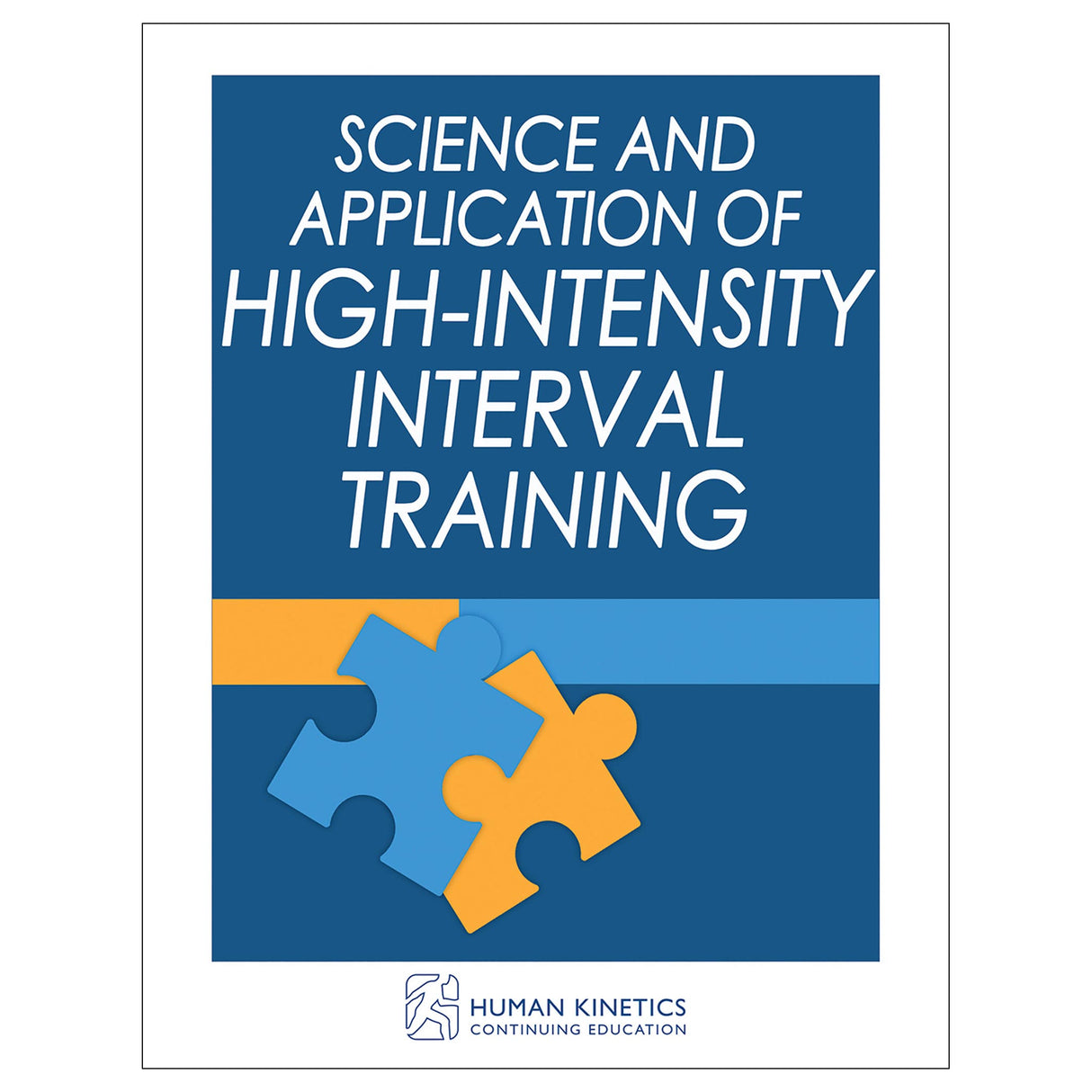Science and Application of High-Intensity Interval Training Online CE Exam With Print Book
Author: Human Kinetics
$166.95 CAD
Human Kinetics strongly recommends that you complete your exam within the calendar year of your date of purchase to ensure approved credits do not expire for your organization.
- Science and Application of High-Intensity Interval Training book
- Online continuing education exam
The final 20 chapters each focus on a different sport and are written by experts who have successfully applied HIIT principles at an elite level in their respective sport. Gain insight into specific ways to incorporate HIIT into a training regimen, with sport-specific preparation and competition phases, an overall one-year training program, and real-world accounts of how HIIT was used to successfully prepare an athlete for competition. After reading the book, certified professionals can take the companion CE exam to earn continuing education credits.
Learning Objectives
- Explain and differentiate the five types of high-intensity interval training.
- Explain how to manipulate the HIIT variables to maximize improvements in physical performance.
- Explain how to incorporate HIIT into an athlete’s training program.
- Describe the influence HIIT can have on fatigue, stress, and overall health.
- Describe how to apply knowledge about HIIT to 20 popular individual and team sports.
- Identify how HIIT is incorporated into sport-specific preparation and competition phases to prepare athletes for competition.
Audience
A continuing education course for strength and conditioning coaches, personal trainers, athletic trainers, exercise physiologists, and other certified fitness professionals.Chapter 1. Genesis and Evolution of High-Intensity Interval Training
Paul Laursen and Martin Buchheit with contributions from Jean Claude Vollmer
Chapter 2. Traditional Methods of HIIT Programming
Martin Buchheit and Paul Laursen
Chapter 3. Physiological Targets of HIIT
Martin Buchheit and Paul Laursen
Chapter 4. Manipulating HIIT Variables
Martin Buchheit and Paul Laursen
Chapter 5. Using HIIT Weapons
Martin Buchheit and Paul Laursen
Chapter 6. Incorporating HIIT Into a Concurrent Training Program
Jackson Fyfe, Martin Buchheit, and Paul Laursen
Chapter 7. HIIT and Its Influence on Stress, Fatigue, and Athlete Health
Philip Maffetone, Paul Laursen, and Martin Buchheit
Chapter 8. Quantifying Training Load
Martin Buchheit and Paul Laursen
Chapter 9. Response to Load
Martin Buchheit, Paul Laursen, Jamie Stanley, Daniel Plews, Hani Al Haddad, Mathieu Lacome, Ben Simpson, and Anna Saw
Chapter 10. Putting It All Together
Paul Laursen and Martin Buchheit
Part II. Sport-Specific Application of High-Intensity Interval Training
Chapter 11. Combat Sports
Duncan French
Chapter 12. Cross-Country Skiing
Øyvind Sandbakk
Chapter 13. Middle-Distance Running
Jean Claude Vollmer and Martin Buchheit
Chapter 14. Road Running
Jamie Stanley and Carlos Alberto Cavalheiro
Chapter 15. Road Cycling
Marc Quod
Chapter 16. Rowing
Daniel Plews
Chapter 17. Swimming
Tom J. Vandenbogaerde, Wim Derave, and Philippe Hellard
Chapter 18. Tennis
Jamie Fernandez-Fernandez
Chapter 19. Triathlon
Daniel Plews and Paul Laursen
Chapter 20. American Football
Johann Bilsborough and Moses Cabrera
Chapter 21. Australian Football
Aaron Coutts, Joel Hocking, and Johann Bilsborough
Chapter 22. Baseball
Robert Butler and Matt Leonard
Chapter 23. Basketball
Xavi Schelling and Lorena Torres-Ronda
Chapter 24. Cricket
Carl Petersen and Aaron Kellett
Chapter 25. Field Hockey
Dave Hamilton
Chapter 26. Ice Hockey
Matt Nichol
Chapter 27. Handball
Martin Buchheit
Chapter 28. Rugby Union
Nick Gill and Martyn Beaven
Chapter 29. Rugby Sevens
Nick Poulos
Chapter 30. Soccer
Martin Buchheit, Mathieu Lacome, and Ben Simpson





